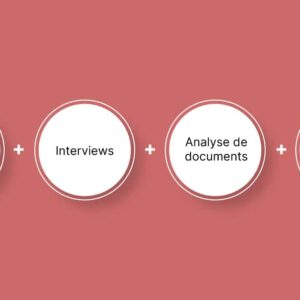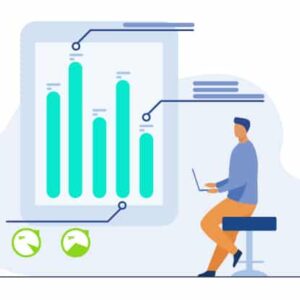
Field Research : Definition, Examples & Methodology
Field Research : Definition, Examples & Methodology Try a free Voxco Online sample survey! Unlock your Sample Survey SHARE THE ARTICLE ON Table of Contents

Find the best survey software for you!
(Along with a checklist to compare platforms)
Take a peek at our powerful survey features to design surveys that scale discoveries.
Explore Voxco
Need to map Voxco’s features & offerings? We can help!
Find the best customer experience platform
Uncover customer pain points, analyze feedback and run successful CX programs with the best CX platform for your team.

We’ve been avid users of the Voxco platform now for over 20 years. It gives us the flexibility to routinely enhance our survey toolkit and provides our clients with a more robust dataset and story to tell their clients.
Steve Male
VP Innovation & Strategic Partnerships, The Logit Group
Explore Regional Offices

Find the best survey software for you!
(Along with a checklist to compare platforms)
Take a peek at our powerful survey features to design surveys that scale discoveries.
Explore Voxco
Need to map Voxco’s features & offerings? We can help!
Find the best customer experience platform
Uncover customer pain points, analyze feedback and run successful CX programs with the best CX platform for your team.

We’ve been avid users of the Voxco platform now for over 20 years. It gives us the flexibility to routinely enhance our survey toolkit and provides our clients with a more robust dataset and story to tell their clients.
Steve Male
VP Innovation & Strategic Partnerships, The Logit Group
Explore Regional Offices

Find the best survey software for you!
(Along with a checklist to compare platforms)
Take a peek at our powerful survey features to design surveys that scale discoveries.
Explore Voxco
Need to map Voxco’s features & offerings? We can help!
Find the best customer experience platform
Uncover customer pain points, analyze feedback and run successful CX programs with the best CX platform for your team.

We’ve been avid users of the Voxco platform now for over 20 years. It gives us the flexibility to routinely enhance our survey toolkit and provides our clients with a more robust dataset and story to tell their clients.
Steve Male
VP Innovation & Strategic Partnerships, The Logit Group
Explore Regional Offices
As businesses continue to embrace digital transformation and data-driven decision-making, predictive analytics has emerged as a game-changer. AI-driven predictive models allow you to harness the power of historical data and statistical algorithms to make predictions about the future with unparalleled accuracy in mere seconds.
Whether you’re looking to optimize your marketing campaigns, reduce operational costs, or improve customer experience, predictive analytics can help you achieve your targets. In this blog, we’ll explore the various types of predictive analytics models, how they work, their applications, their benefits, and their limitations. By the end of this blog, you’ll have a comprehensive understanding of how predictive analytics models can elevate your business and drive better outcomes. Let’s dive in.
Predictive analytics is a subfield of data science that analyses historical data and makes predictions about future events or outcomes using statistical algorithms, machine learning, and other techniques. This method assists organizations in identifying patterns, detecting anomalies, and forecasting future trends.
Predictive analytics is often leveraged by organizations to:
To read more on predictive analytics, click here for our detailed blog.
Learn about how you can predict and prevent churn with Voxco Intelligence.
Predictive analytics models are statistical or machine learning algorithms that use historical data to make predictions about future events or behaviors. These models analyze large amounts of data to identify patterns and trends, which they then use to forecast future outcomes.
Predictive analytics model development typically entails several steps, including data preparation, model selection, feature engineering, and model training and testing. The goal is to create a model that predicts future outcomes accurately based on a set of input variables or features.
Finance, healthcare, marketing, and retail are just a few of the industries that can benefit from predictive analytics modeling. Predictive modeling in business analytics can help in identifying potential risks and opportunities, optimizing operations, and making more informed decisions based on data. Read our article on the use of predictive analytics in business to get more insights.
Predictive analytics models identify patterns and trends in historical data that can be used to predict future outcomes. Several steps are usually involved in the process:
Gathering relevant data from multiple sources is the first step in developing a predictive analytics model.
Once the data has been collected, it must be cleaned and transformed into an analysis-ready format.
In this step, the most relevant variables or features are selected from the dataset to be used in the model.
There are various types of predictive analytics models available, including regression, decision trees, and neural networks. Based on the nature of the problem and the available data, the appropriate model is chosen.
The model is trained on historical data in this step to learn patterns and relationships that can be used to make predictions.
The model is evaluated after it has been trained to ensure that it can make accurate predictions on new, unseen data.
Finally, the model is used to make predictions based on new data and provide business insights.
Leverage the power of AI and ML to create predictive models and identify at risk customers.
Predictive analytics models are classified into several types, including:
These are a few predictive analytics models examples. There are numerous other models, each with its own set of strengths and weaknesses, that can be used to solve various types of problems.
Predictive modeling is divided into three levels, each with a different level of complexity and accuracy.
This is the most basic level of predictive modeling, involving the use of historical data to identify patterns and trends. The goal of descriptive modeling is to comprehend what has occurred in the past and to provide insights into what is likely to occur in the future based on that data.
This level of predictive modeling entails making predictions about future events or outcomes using statistical algorithms and machine learning techniques. Predictive models are trained on historical data to identify patterns and relationships between various data points. Predictive modeling’s goal is to make accurate predictions about future events based on historical data.
The most advanced level of predictive modeling, in which predictive models are used to make recommendations or decisions. Prescriptive models consider a variety of variables and factors before recommending the best course of action to achieve a specific goal or outcome. Prescriptive modeling seeks to improve decision-making processes and maximize business outcomes.
Predictive analytics models have numerous applications in various industries, including:
Experience the power of AI with Voxco Intelligence.
Receive real-time insights that drive impact within your organization.
Businesses can benefit from predictive analytics models in a variety of ways, including:
Although predictive models offer a wide range of benefits, they also a couple limitations that must be considered. Here are some of the key limitations of predictive analytics models.
Predictive analytics models are powerful tools that can help businesses gain insights into future trends and make informed decisions. Businesses can gain a competitive advantage in their industry by leveraging historical data and advanced algorithms. Companies in the financial services, healthcare, and retail industries benefit greatly from the use of predictive analytics software, predictive analytics tools are a type of tool that is useful to businesses of all sizes.
The AI capabilities of Voxco Intelligence enable you to build predictive models that deliver predictive insights into customer behavior, make future forecasts, and make data-driven decisions to improve customer experience.
The best model for predictive analytics depends on the nature of the problem and the available data. There are various types of predictive models, each with its own set of advantages and disadvantages, and selecting the right one is dependent on the specific needs of the business. It is critical to select a model that is appropriate for the problem and the available data, as well as to continuously evaluate and refine the model in order to improve its accuracy and performance.
1. What is a predictive analytics model?
Predictive analytics models are statistical or machine learning algorithms that use historical data to make predictions about future events or behaviors. These models analyze large amounts of data to identify patterns and trends, which they then use to forecast future outcomes.
2. What are the benefits of predictive analytics models?
The key benefits of using predictive analytics models are:
3. What are the limitations of predictive analytics models?
These are some limitations of predictive analytics models:
4. What is a predictive analytics platform?
A predictive analytics platform is a software tool that analyses data and predicts future events or outcomes using statistical and machine learning algorithms. These platforms have applications in a variety of industries, including finance, healthcare, marketing, and manufacturing.
Join the network of 500+ happy survey creators.
Explore all the survey question types
possible on Voxco
Read more

Field Research : Definition, Examples & Methodology Try a free Voxco Online sample survey! Unlock your Sample Survey SHARE THE ARTICLE ON Table of Contents

Free Download: Generate customer journey insights using our customer experience templates. Download Now CX Strategy & Management Hub TALK TO A CX EXPERT It can

How to write survey questions? SHARE THE ARTICLE ON Table of Contents “If you want the right answers, you must ask the right questions.” This

Representative Sample: Definition, Method and Examples Market Research Toolkit Get started with Voxco’s Market Research Toolkit. Market Research trends guide + Online Surveys guide +

Employee survey questions about culture SHARE THE ARTICLE ON Share on facebook Share on twitter Share on linkedin Table of Contents Employees all over the

The Role of Panel Surveys in Ensuring High Data Quality and Consistency SHARE THE ARTICLE ON Table of Contents Introduction When it comes to research
We use cookies in our website to give you the best browsing experience and to tailor advertising. By continuing to use our website, you give us consent to the use of cookies. Read More
| Name | Domain | Purpose | Expiry | Type |
|---|---|---|---|---|
| hubspotutk | www.voxco.com | HubSpot functional cookie. | 1 year | HTTP |
| lhc_dir_locale | amplifyreach.com | --- | 52 years | --- |
| lhc_dirclass | amplifyreach.com | --- | 52 years | --- |
| Name | Domain | Purpose | Expiry | Type |
|---|---|---|---|---|
| _fbp | www.voxco.com | Facebook Pixel advertising first-party cookie | 3 months | HTTP |
| __hstc | www.voxco.com | Hubspot marketing platform cookie. | 1 year | HTTP |
| __hssrc | www.voxco.com | Hubspot marketing platform cookie. | 52 years | HTTP |
| __hssc | www.voxco.com | Hubspot marketing platform cookie. | Session | HTTP |
| Name | Domain | Purpose | Expiry | Type |
|---|---|---|---|---|
| _gid | www.voxco.com | Google Universal Analytics short-time unique user tracking identifier. | 1 days | HTTP |
| MUID | bing.com | Microsoft User Identifier tracking cookie used by Bing Ads. | 1 year | HTTP |
| MR | bat.bing.com | Microsoft User Identifier tracking cookie used by Bing Ads. | 7 days | HTTP |
| IDE | doubleclick.net | Google advertising cookie used for user tracking and ad targeting purposes. | 2 years | HTTP |
| _vwo_uuid_v2 | www.voxco.com | Generic Visual Website Optimizer (VWO) user tracking cookie. | 1 year | HTTP |
| _vis_opt_s | www.voxco.com | Generic Visual Website Optimizer (VWO) user tracking cookie that detects if the user is new or returning to a particular campaign. | 3 months | HTTP |
| _vis_opt_test_cookie | www.voxco.com | A session (temporary) cookie used by Generic Visual Website Optimizer (VWO) to detect if the cookies are enabled on the browser of the user or not. | 52 years | HTTP |
| _ga | www.voxco.com | Google Universal Analytics long-time unique user tracking identifier. | 2 years | HTTP |
| _uetsid | www.voxco.com | Microsoft Bing Ads Universal Event Tracking (UET) tracking cookie. | 1 days | HTTP |
| vuid | vimeo.com | Vimeo tracking cookie | 2 years | HTTP |
| Name | Domain | Purpose | Expiry | Type |
|---|---|---|---|---|
| __cf_bm | hubspot.com | Generic CloudFlare functional cookie. | Session | HTTP |
| Name | Domain | Purpose | Expiry | Type |
|---|---|---|---|---|
| _gcl_au | www.voxco.com | --- | 3 months | --- |
| _gat_gtag_UA_3262734_1 | www.voxco.com | --- | Session | --- |
| _clck | www.voxco.com | --- | 1 year | --- |
| _ga_HNFQQ528PZ | www.voxco.com | --- | 2 years | --- |
| _clsk | www.voxco.com | --- | 1 days | --- |
| visitor_id18452 | pardot.com | --- | 10 years | --- |
| visitor_id18452-hash | pardot.com | --- | 10 years | --- |
| lpv18452 | pi.pardot.com | --- | Session | --- |
| lhc_per | www.voxco.com | --- | 6 months | --- |
| _uetvid | www.voxco.com | --- | 1 year | --- |